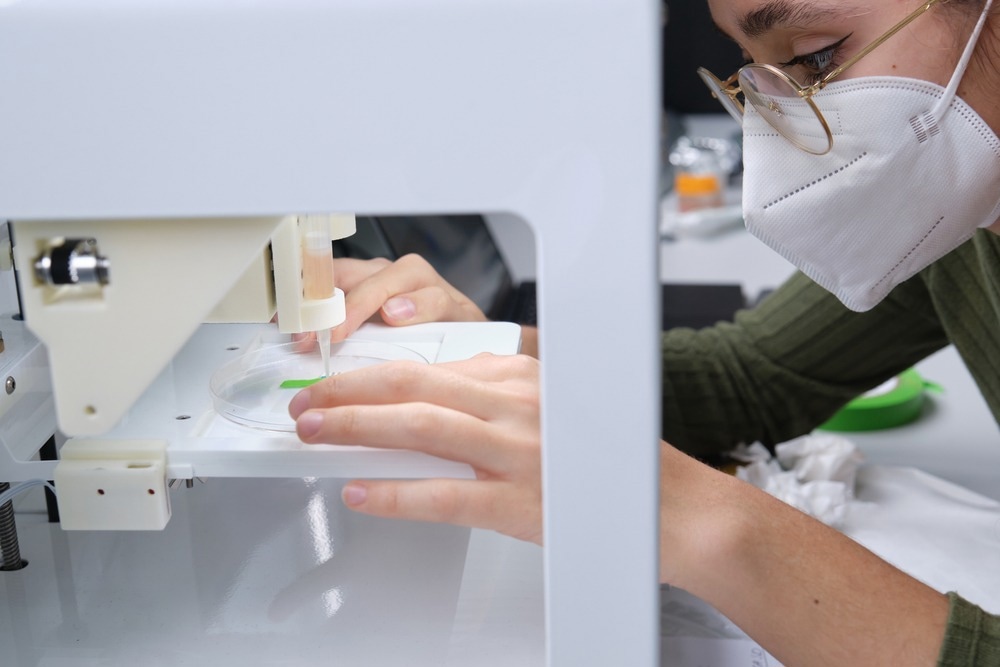Permeable three-dimensional (3D) monoliths produced from organic substances can be used for a broad range of energy storage, thermal insulation, and bioengineering applications. However, the lack of physical customization and form accuracy of 3D monoliths severely restrict their usefulness in several practical applications.

Study: 3D Printing of Cellulose Nanofiber Monoliths for Thermal Insulation and Energy Storage Applications. Image Credit: Ladanifer/Shutterstock.com
A pre-proof paper from the journal Additive Manufacturing addresses this problem by producing 3D customizable monoliths from cellulose nanofibers utilizing a material extrusion-based 3D printing technique.
Three-dimensional (3D) Monoliths: Overview and Challenges
Over the last several decades, academic and technical groups have made remarkable progress in the field of three-dimensional (3D) monoliths. With the rising need for customized electronic devices, significant effort has been put into producing 3D monoliths with customizable forms and unique functionalities for various applications such as energy storage, thermal insulation, and pressure transducers.
To date, carbon nanostructures, cellulose nanofibers, MXene nanoflakes, graphene, and polymeric materials have been widely used to fabricate 3D permeable monoliths. The inherent properties of these building components are mirrored in their 3D productions, resulting in distinctive qualities of the resulting monoliths.
However, most of the manufacturing techniques used to create 3D monoliths are difficult to control, making it tough to meet the criteria for particular situations. Thus, producing practical and cost-effective multifaceted 3D monoliths with acceptable form accuracy and repeatability remains an important problem.
3D Printing for Fabrication of 3D Porous Monoliths
3D printing is a unique manufacturing method that employs a layer-by-layer technique to quickly create customizable 3D designs using a digital design. Direct ink writing (DIW) is one of the most popular 3D printing methods owing to its adjustable extrusion approach and simple operating mode.
Unlike conventional 3D printing procedures, DIW can mix a wide variety of substances into inks and print them into sophisticated geometric structures. As a result, the DIW approach has a promising future in the fabrication of configurable, multipurpose 3D monoliths.
However, excellent ink rheological efficiency is crucial to ensuring high structural strength after 3D printing. The accuracy of extruded material is also affected by 3D printing settings.
As a consequence, creating the viscoelastic ink with appropriate rheological behavior and optimizing the accompanying printing process are critical when employing the DIW 3D printing technology to create 3D monoliths.
Cellulose Nanofibers: The Future of 3D Printing
Developing sustainable, plentiful, and disposable materials to replace petroleum-derived resources in 3D printing monoliths is critical to attaining the United Nations Sustainable Development Goals (SDGs). Cellulose nanofibers (CNFs) generated from renewable sources are attractive candidates for manufacturing durable 3D multifunctional monoliths because of their natural availability, good biocompatibility, wide surface area, and varied surface composition.
More significantly, cellulose nanofiber-based suspensions have controlled rheological characteristics that can be tuned by changing the morphology, size, and surface characteristics of the cellulose nanofibers. Adjusting the solid composition during the 3D printing process is a simple way to control the rheological characteristics of cellulose nanofibers.
This remarkable property enables cellulose nanofibers to utilize 3D printing inks effectively. The use of cellulose nanofiber inks in the DIW 3D printing technique has opened up new possibilities for creating customizable 3D monoliths. However, obtaining high-quality 3D printed monoliths remains a key hurdle in widespread usage.
Highlights and Key Developments of the Current Study
This paper describes the 3D printing of customizable monoliths with cellulose nanofibers by tweaking the rheological characteristics and 3D printing settings, as well as their applicability in the fields of energy storage and thermal insulation.
The elastomeric ink for DIW 3D printing was prepared using cellulose nanofibers extracted from oil palm wood. The influence of cellulose nanofibers content on rheological characteristics and 3D processability was studied thoroughly.
Both theoretical investigation and computational fluid dynamics simulations were performed to better comprehend the discharge flow characteristics of cellulose nanofibers-based ink. The 3D printing settings of cellulose nanofibers were then modified, yielding a range of customizable 3D monoliths with remarkable geometric precision.
The scaffold made of cellulose nanofiber exhibited a porous structure, excellent mechanical characteristics, and low thermal conduction. In addition, the porous cellulose nanofibers scaffold could be employed as a platform for aniline in-situ polymerization (ANi).
The 3D printed monoliths produced using cellulose nanofibers in this study have tremendous potential as multifunctional scaffolds in a variety of application areas due to their renewability, customizable geometry, eco-friendliness, and form fidelity.
Reference
Zhou, G. et al. (2022). 3D Printing of Cellulose Nanofiber Monoliths for Thermal Insulation and Energy Storage Applications. Additive Manufacturing. Available at: https://www.sciencedirect.com/science/article/pii/S2214860422005139?via%3Dihub
Disclaimer: The views expressed here are those of the author expressed in their private capacity and do not necessarily represent the views of AZoM.com Limited T/A AZoNetwork the owner and operator of this website. This disclaimer forms part of the Terms and conditions of use of this website.